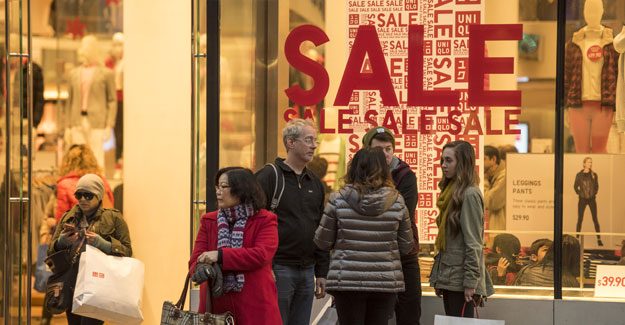
US Apparel Sales Will Rebound In 2021
According to Mastercard’s holiday spend data, consumers did their fair share of shopping this season — home furnishings, home decoration, and home improvement products all had a banner season as consumers set about more perfectly feathering their nests. But apparel sales dropped off 19% year on year, according to the data. And, according to McKinsey’s The State of Fashion 2021 report, it was far more than a one-off tough season — it was a really bad year. In 2019, the industry’s overall sales went up about 4% worldwide. In 2020, according to the report, the industry’s economic profit could be down by 93%. Moreover, the industry will start regaining ground in the year 2021, particularly the Asia Pacific region. But subdued tourism, limited events and consumers continuing to stick close to home in the first half of the year will act as a persistent drag to recovery. Still others are more optimistic. Designers like Prabal Gurung, Tracy Reese and Thakoon believe once the pandemic period is finally at an end, fashion is poised to make a massive comeback. Said simply, consumers are tired of wearing sweatpants and pajamas and are hungry to bring sexy back as part of the grand re-entrance to society at large. “Fashion is a pendulum,” says Steven Kolb, head of the Council of Fashion Designers of America. “It goes from one extreme to another and that will happen again here.” Examples in fashion history abound. Following the end of World War II Christian Dior captured public attention with a line built on what were described as hyper-feminine design that served to repudiate the more masculine garments that has characterised the war period. But, historian Kimberly Chrisman-Campbell explains, that example is a bit more complicated. The Dior line was undeniably a hit — but women continued wearing pants, a WWII era style that has stuck around since the 1940s. A trendline can both snap back and keep moving forward at the same time. What will matter the most, according to the experts, is not so much when the pandemic period ends, but how much consumer tastes have really adjusted, Chrisman-Campbell notes. “A pandemic, like a war, will accelerate trends that were already underway, and also disrupt the normal workings of the fashion industry,” she says. “A few years ago, we were all talking about how fast fashion was bad for the planet and workers. These issues have been heightened and focused by the pandemic.” What all of this will mean for the long-term future of the fashion market remains an unknown. Consumers could determine they are comfortable just owning fewer clothes — and the current downturn will become a larger commitment to a slightly more ascetic fashion lifestyle for the average US consumer. Perhaps when people want to go out, they will be less likely to buy and more likely to head to a site like The RealReal to rent something special. But then again, it seems almost equally possible that after over a year in their living rooms wearing sweats and yoga pants, consumers will be hungry to wear something with a zipper that isn’t a hoodie. Consumer tastes can be rather hard to predict. Which means fashion as an industry ends 2020 on a bit of a cliffhanger as the world waits to see if consumers will get back to buying clothes — or if their sartorial style has been permanently altered.
Textile Excellence
If you wish to Subscribe to Textile Excellence Print Edition, kindly fill in the below form and we shall get back to you with details.








